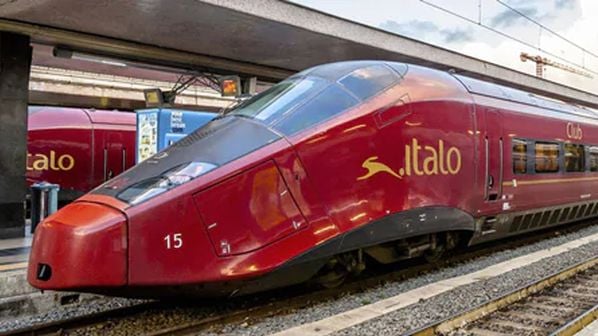FRENCH new entrant Kevin Speed has confirmed details of the new train fleet that it plans to order to operate Ilisto commuter services on three high-speed lines in France from 2028.
Speaking exclusively to IRJ, Kevin Speed chairman, Mr Laurent Fourtune, said that the 20 new seven-car trains to be ordered from Alstom will be single-deck, each seating up to 760 passengers and featuring distributed traction equipment.
This marks a radical departure from the double-deck high-speed trains ordered by French National Railways (SNCF) in recent years, including the latest TGV M, which retain the traditional TGV format of articulated coaches and traction equipment located in self-contained power cars at each end of the train.
“When you call at all stations you need distributed traction,” Fourtune says, as he believes this will be better at providing the high rates of acceleration and efficient regenerative braking required for starting and stopping more frequently.
To reduce station dwell times, each coach will have two doors per side. This is again a departure from established SNCF practice, but a feature of some Japanese Shinkansen designs, as well as the Hitachi class 395 Javelin trains that operate commuter services between London and Kent on High Speed 1 in Britain.
Fourtune expects that the new fleet will be ordered this summer, once Kevin Speed has completed the process of raising a further €1.2bn of debt and equity finance, which is being conducted by Nomura and Santander CIB.
The new fleet will be maintained, potentially with the involvement of the manufacturer, at three new depots that Kevin Speed is planning to build halfway along each of the three high-speed lines it has signed a 10-year track access contract to operate on with SNCF Network. One Ilisto service an hour in each direction, calling at all intermediate stations, will run from roughly 06.00 to 22.00.
Locating the new “pit-stop”-style maintenance facilities and crew depots at the midpoint of the line avoids the cost of city-centre sites and should prove attractive to staff, Fourtune says.
“You’re always back home at the end of your shift,” he says. “That makes a difference for drivers.” As well as reducing staff turnover, Kevin Speed also hopes that this will help to achieve its objective of women making up 50% of the 150 drivers that it will eventually need.
The total staff complement will be 450, but the single-class services will offer no catering and there will be no Ilisto ticket offices at stations. “That is so 20th Century,” Fourtune says. Ticketing will be “almost 100% digital,” with fares priced according to demand, but likely to start at €5 for an off-peak single journey from Paris to Lille.
Regular commuters will be rewarded for their loyalty, the total price for the number of journeys made within a specific period of time will be capped, replicating what some urban transport operators do on a daily, weekly or monthly basis.
“The more you travel, the less you pay,” Fourtune says. “We are trying to add something new to the system in France, to complement SNCF Voyageurs. Open-access is the future.”
The post Distributed traction and single deck for Kevin Speed’s new train fleet appeared first on International Railway Journal.



